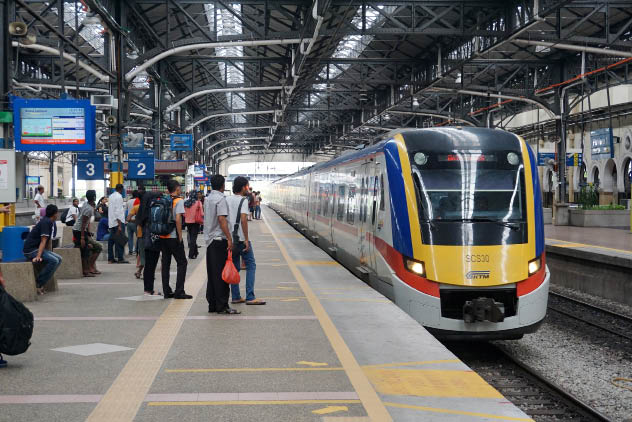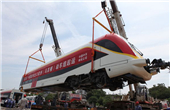Zhou Ande: Innovator of Meter Gauge Trains
China Today by Dang Xiaofei, October 13, 2016 Adjust font size:
Technical Difficulties
Upon being given the task of research and design, Zhou felt great pressure due to the importance of the project. As a peninsula between the Indian Ocean and South China Sea, Malaysia is hot and humid. The average temperature is above 35 degrees Celsius all year round. The Malaysian party required the temperature inside the wagons to average 19 degrees, which represented a major challenge as regards air-conditioning systems.
“If the technology is not up to scratch, condensate water cascades over the outside of the wagon when the train moves,” said Zhou. To solve this problem, Zhou and his team improved the cooling capacity, moisture removal and drainage. Finally they overcame this difficulty to the satisfaction of the Malaysian client.
Old electric trains in Malaysia temporarily lose power when passing neutral sections, causing great inconvenience to passengers. The photovoltaic integration technology installed in China-made wagons ensures a continuous power supply. The air-conditioning, lights and television hence work normally when the EMU passes through places with no electricity.
Another challenge for Zhou and his team was the large passenger volume. Trains with six wagons carry more than 1,200 passengers, and there is a train every seven to 15 minutes. “This is a great challenge for the operation of the power system and bogie,” said Zhou.
After researching for several days and nights using wheel-disk braking bogie technology, Zhou and his team managed to get the train to stop at a distance of one km within 90 seconds. “This technique was first introduced in China,” Zhou explained. So the bogie, just like a car chassis, serves to steer, support the body of the car and absorb the impact at the same time.
Zhou also explained that the train body is made of high-strength aluminum alloy, and it takes only two minutes after the train starts to reach a speed of 160 km per hour. In addition to the design that ensures the safety of the EMU throughout its operation, modern systems such as an axes temperature alarm system, a horizontal stabilizing device, and a monitoring system for situations outside the train, provide security sufficient for the train to move at high speed.

An intercity locomotive designed by Zhou Ande in Kuala Lumpur, capital of Malaysia.
The interior of train units that run on meter gauge track is also designed to cater to local Malaysian factors. Ladies only wagons are installed, and there is also a prayer booth for long journeys.
Zhou emphasized that technological innovation is the main reason for his company’s success in Malaysia. In his opinion, technical innovation performs a vital organic function. “Human beings cannot live without blood circulating their systems, and without innovation the CRRC Zhuzhou can achieve little in Malaysia.”
In order to generate more orders, according to Zhou, continuous innovations are urgently needed to products’ technical performance. “China’s trains and relevant technologies are at the same level as that of top players in the sector. However, our products are closer to customer demands.”
As for the criticism that China “mimics” foreign technology with its high-speed trains, Zhou replied: “If after introducing foreign technology we can improve it, is that still ‘imitation’?” The CRRC trains for Malaysia adopt European and International Union of Railways standards, and have passed third-party design, production and testing evaluation for meter gauge tracks. They set the world record of 176 km per hour during a 10,000 km glitch-free test run.

